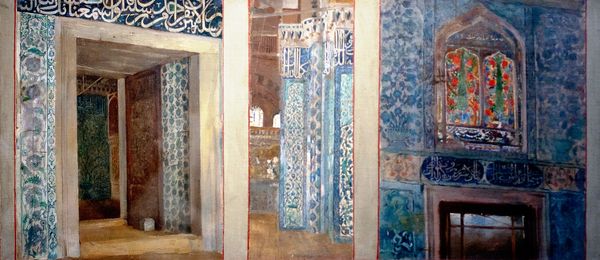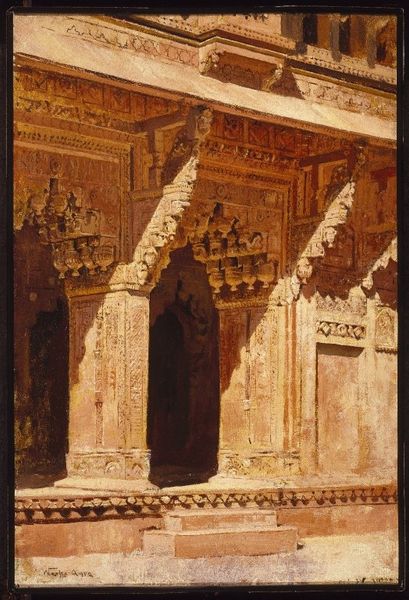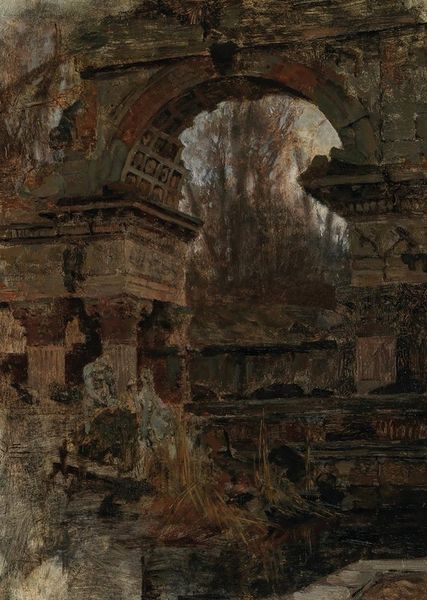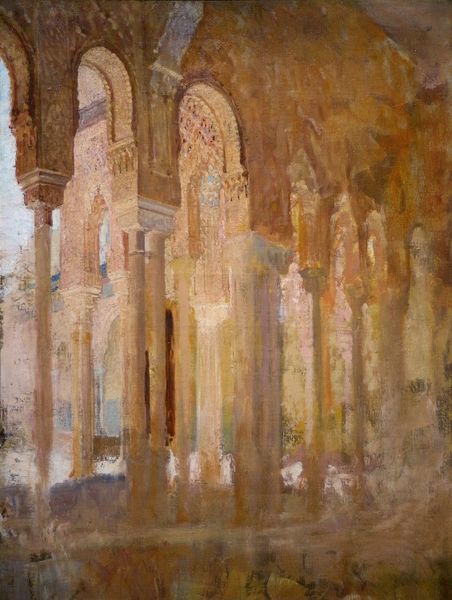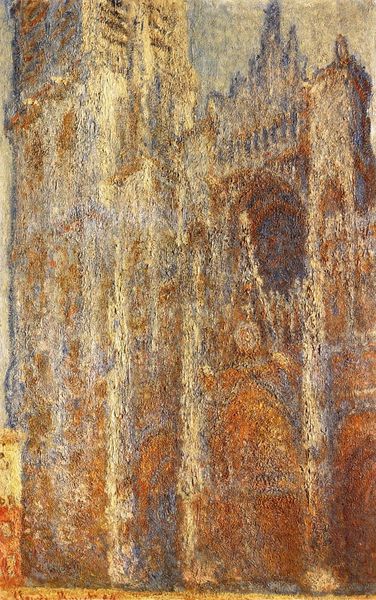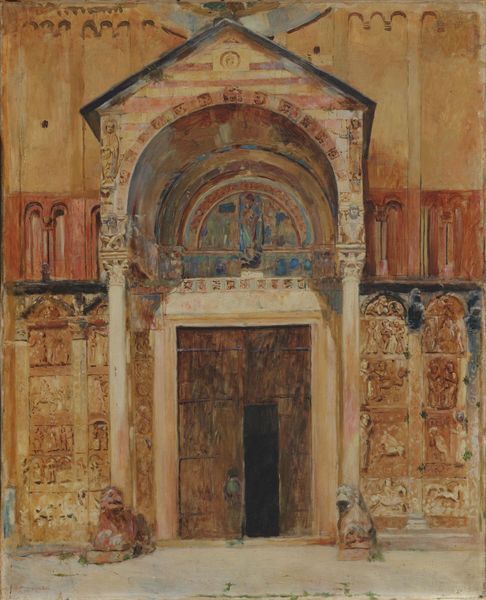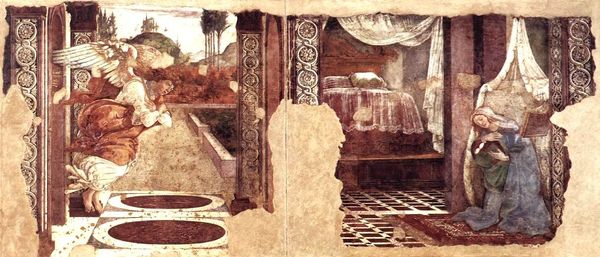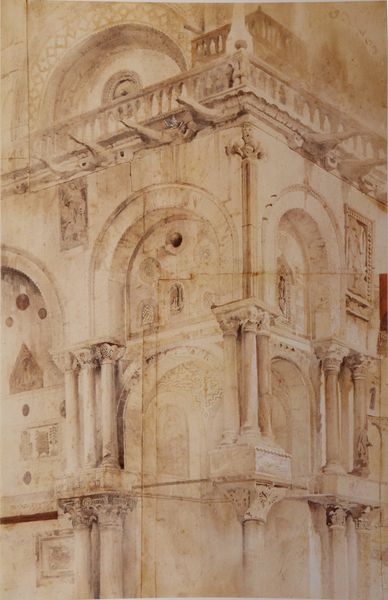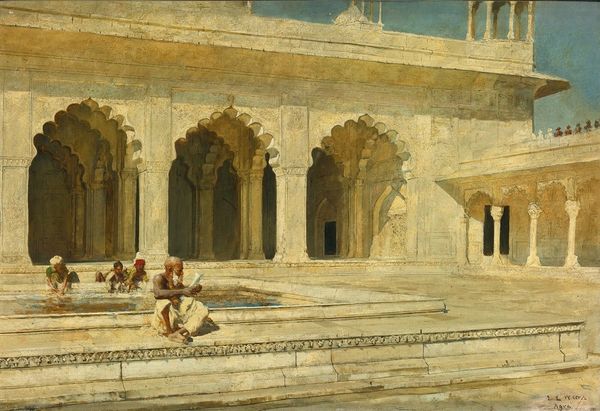
carving, painting, watercolor
#
medieval
#
carving
#
painting
#
landscape
#
watercolor
#
brick
#
column
#
urban art
#
arch
#
orientalism
#
islamic-art
#
genre-painting
#
watercolor
#
realism
Copyright: Public domain
Curator: Immediately, the light catches my eye. It's almost tactile as it rakes across the textured surfaces. Editor: That light definitely dominates, doesn't it? The figure huddled in shadow feels so small, almost erased by the architecture's grandeur. It’s undeniably somber, but also deeply human. Curator: This is Tom Roberts's 1883 watercolor, "Basking - A Corner in the Alhambra". Look closely at the craftsmanship – the intricate carvings brought to life with such deliberate application of pigment. The architectural elements practically breathe, solidifying the image's cultural identity through carefully studied depictions of physical things. Editor: Exactly! The social and economic contrasts at play here are so apparent. The opulence of the Alhambra as a historical and material construction becomes a backdrop for an individual seemingly without recourse to its splendor, hinting at questions of inequality, tourism, and potentially even orientalism as a lens for Roberts. Curator: But note also the artistic choices; Roberts wasn't just replicating reality. He made conscious decisions regarding composition, using shadows to guide the viewer's eye, carefully crafting a sense of depth from a traditionally 'flat' medium. This isn't purely social commentary. It's technical mastery shaping a narrative. What meaning do we derive when craft creates commentary? Editor: I think it emphasizes the artist's own positioning, doesn't it? A privileged outsider observing a scene where wealth and destitution occupy the same frame. That tension – that uneasy relationship – speaks volumes. This piece reflects a moment of colonial encounter, both observed and shaped by Victorian social mores. Curator: I’m also compelled to reflect on how the water itself interacted with the paper, what effect that might have had on its reception and perception – those processes influence interpretation too, because to view something is to encounter it at a moment in time that isn't easily extracted from process or concept. Editor: Absolutely. It makes you consider not just what's depicted, but also who benefits from its depiction and how power operates through such imagery. Curator: It makes me see the material, to touch time in that way, as art. Editor: To contextualize the past is a continual social duty. It’s far more than what has been handed down or produced for us; it requires we constantly seek context and conversation, not just beauty.
Comments
No comments
Be the first to comment and join the conversation on the ultimate creative platform.


